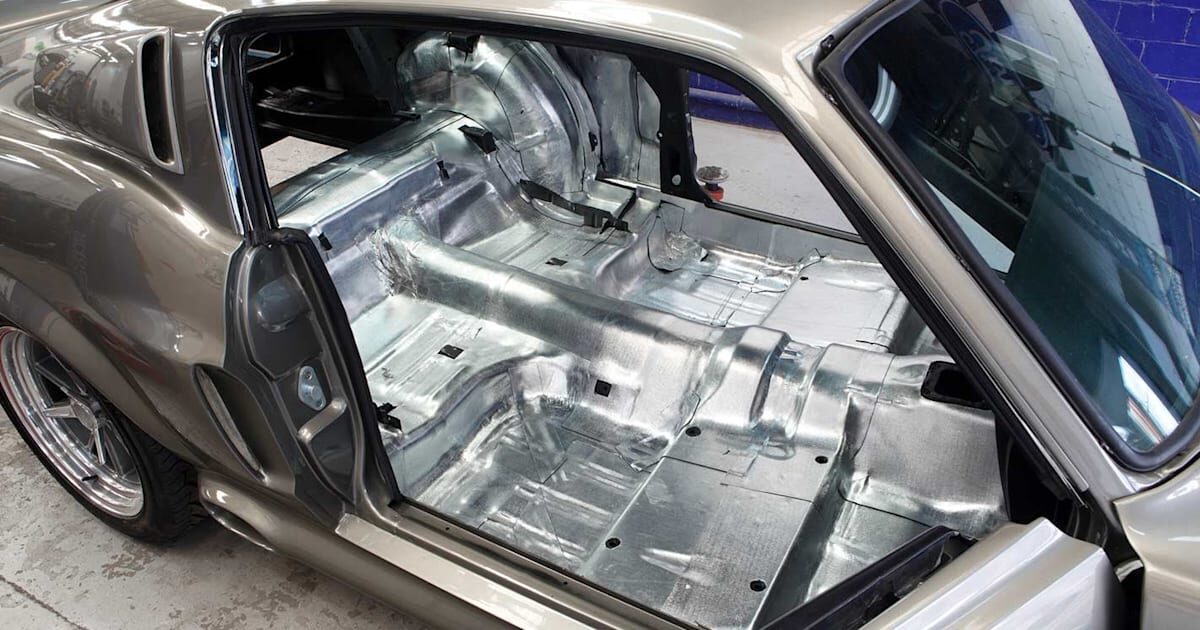Road noise is obnoxious. There’s nothing more annoying than the howl of the wind, or the horn three cars back blaring. Our cars are our personal sanctuaries, a welcome respite in a world of chaos. Nobody wants to have to deal with hearing the wind whistling over their windshield, knowing that no matter how long they go on no one is going anywhere. You have put up with this long enough, and decided to soundproof the car. You could do it yourself, if you had time. But if you’re like most people, you really don’t. You need to figure out the highest quality company to take care of your baby. Here are five standards to look for when choosing the right soundproofing company.
Standard 1: Multiple layers
Noises come from various sources and at different frequencies. It is impossible to block out all noises with a single material. There are three types of base soundproofing materials:
- Vibration damping – reduce vibration noise
- Sound absorbing – absorb airborne noise
- Sound insulating – serve as barriers to stop noise passing through
Which materials are required for which area is dependent on the sources of noise affecting that area. Most of parts of the car require vibration damping material on the frame, followed by the second layer of either sound absorption or insulation material. Doors for example, require all 3 of the materials due to very heavy load of noise coming through them. A single layer of vibration damping material installed will add 70% – 80% of the total weight of the two layers and yet provide for only 55% – 60% of the total benefit of the two layer solution.
Standard 2: Multiple thicknesses
Even though your car looks like it’s one piece, that is far from the truth. The thickness of the metal towards the bottom of the car is much different than on the roof. Because of this, the thickness of the vibration damping material needs to be adjusted accordingly. Vibration damping materials are the heaviest part of soundproofing installation and come in various thicknesses, usually 1.6mm, 2mm, 2.6mm and 4mm. If you only have a thin layer of vibration damping material at the base of the car, little to no protection will be given against sound and vibration. If you want to sound proof the roof of your car, only a thin material is needed. If you use thick material, you will increase the weight of the car significantly, therefore reducing its overall performance. The perfect balance between insulating and performance is not an art, it’s not a science. It is an art based on science.
Standard 3: Efficiency
Vibration damping materials function the best if they cover 60-80% of the section’s surface. 100% coverage is obsolete and adds unnecessary weight. When applied, material needs to be meticulously pressed onto the metal leaving no air bubbles underneath. Any portion of vibration damping material that is not in permanent contact with metal surface of the frame is adding weight without any effect. If you get into a complex area of the frame, it is not necessary to cover every last square inch.
Sound insulating and absorbing materials are different in this aspect – recommended coverage is 90-100% of the surface, and should cover any complex areas as completely as possible, inclusive of any unused holes. These materials are very light in comparison to the vibration damping counterparts and are only limited by the amount of space available in the installation area. For example within the roof there’s only a few millimetres of space available, so only a thin material can be used, most doors on the other hand are relatively spacious and have a lot of space for the thicker and more powerful insulators and absorbers.
Improper installation of insulating materials will lead to reduced efficiency, or even complete failure.
Standard 4: Too much
When it comes to soundproofing it is possible to have too much of a good thing. Excessive use of vibration damping materials is not only detrimental to the total added weight, it can even increase the noise level in the car. Based on basic physics – increasing mass of a vibrating object lowers the frequency, but increases amplitude of vibrations. This can generate a new low frequency ‘humming’ noise to appear in the car. Balancing the right materials in right quantity is the art of soundproofing.
Will my car be too heavy after soundproofing?
Doing a full coverage soundproofing of a car would add an average of 25-40kg weight. An average weight of a car is 1’200kg, while an average adult weights about 70kg. The increase in weight of the car and the caused fuel consumption is insignificant, in fact low air pressure in tires would cause a larger increase in fuel consumption. Installation of vibration damping materials significantly increases the rigidity of the car frame, making it more manoeuvrable in corners and easier to control.
Two radios scenario
Soundproofing achieves the best results when done in full coverage of the car. Partial coverage leads to impression that noise hasn’t lowered, but even increased. Imagine having 2 radios playing in a room at the same volume. If you lower the volume of one of them, it wouldn’t appear to be quieter than it was before, in fact it may seem that the remaining radio has become louder. Listener’s attention is no longer divided among multiple sources, but it focused on just one, making it appear louder. In the car, there are multiple sources of noise – tires on the road surface, other traffic’s noise, engine noise, transmission noise, gravel, wind, rain, etc. It is best to go for a test drive with an expert and have him listen and identify the problem areas to achieve maximum results with lowest investment.
In another articles we explain the factors that go into cost of the car soundproofing if you’d like to know how much it would cost for your car.

